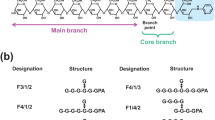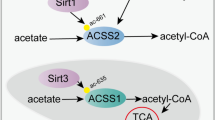Abstract
This has been measured by the glucose uptake, the formation of lactate and pyruvate, the change in the concentration of 2,3-diphosphoglyceric acid and the release of 14CO2 from 14C-1-, 14C-6-, and 14C-uniformly labelled d-glucose.
In normal cells at pH 7.6 about 7% of the glucose consumed has been metabolized via the oxidative pentose phosphate pathway, 93% via the glycolytic pathway to lactate. At pH 6.8 glucose metabolism to lactate and pyruvate is diminished by about 45% compared to that at pH 7.6. The amount of the pentose phosphate pathway is increased to 13%. Thus, the synthesis of NADPH is almost equal at both pH-ranges. In the presence of methylene-blue glucose is metabolized almost completely via the oxidative pathway. There is no significant recycling of glucose metabolites in the pentose phosphate pathway.
In glucose-6-phosphate dehydrogenase deficient erythrocytes the contribution of the pentose phosphate pathway to glucose metabolism at pH 7.6 is only 1.5%, at pH 6.8 5%. In this pH-range, however, the glucose uptake is markedly decreased. The extent of NADPH synthesis therefore at both pH-ranges is again almost the same. In the presence of methylene-blue glucose metabolism via the pentose phosphate pathway can be stimulated only to a very small extent from 1.5% to 2.5%. The capacity of the glucose-6-phosphate dehydrogenase system in the deficient cells is by a factor of 60 smaller than that of the normal cells.
Zusammenfassung
Der quantitative Anteil der Glykolyse und des Pentosephosphatweges am Glucoseumsatz in normalen Erythrocyten und solchen, die einen Mangel an Glucose-6-phosphat-Dehydrogenase haben, wurde durch Bestimmung des Glucoseverbrauchs, der Lactat- und Pyruvatbildung, der Änderung des 2,3-Diphosphoglycerinsäurespiegels sowie der 14CO2-Freisetzung aus 14C-1-, 14C-6- und 14C-uniform-markierter Glucose ermittelt. In normalen Zellen werden bei pH 7,6 etwa 7% der umgesetzten Glucose über den Pentosephosphatweg, 93% über die Glykolyse zu Lactat verstoffwechselt. Bei pH 6,8 ist der Glucoseumsatz zu Pyruvat und Lactat um etwa 45% geringer als bei pH 7,6. Der Anteil des Pentosephosphatweges an diesem Umsatz ist jedoch kompensatorisch auf 13% erhöht. Die Menge des durch den oxydativen Glucoseabbau mittels der 2 Dehydrogenasereaktionen synthetisierten NADPH ist in beiden pH-Bereichen annähernd gleich. In Anwesenheit von Methylenblau wird Glucose fast vollständig oxydativ abgebaut. Eine nennenswerte Recyclisierung innerhalb des Pentosephosphatweges findet in normalen Erythrocyten nicht statt. In Erythrocyten mit einem Mangel an Glucose-6-phosphat-Dehydrogenase ist der Anteil des Pentosephosphatweges am Glucoseumsatz bei pH 7,6 nur 1,5%. Bei pH 6,8 erhöht sich dieser Anteil auf 5%, doch ist der Glucoseverbrauch entsprechend reduziert. Der glykolytische Glucosestoffwechsel in den Mangelzellen ist um etwa 20% geringer als in den normalen Zellen. Auch hier wird in beiden pH-Bereichen eine annähernd gleiche Menge NADPH synthetisiert. In Anwesenheit von Methylenblau kann in den Mangelerythrocyten der Anteil des Pentosephosphatweges am Glucoseumsatz nur unwesentlich von 1,5 auf 2,5% stimuliert werden. Die Kapazität des Glucose-6-phosphat-Dehydrogenase-Systems ist in den Mangelzellen um einen Faktor von 60 gegenüber der in normalen Zellen vermindert.
Similar content being viewed by others
Literatur
Brand, K., Deckner, K., Musil, J.: Z. Physiol. Chem. 351, 213 (1970).
Brin, M., Yonemoto, R. H.: J. Biol. Chem. 230, 307 (1958).
Bücher, Th. H., Czok, R., Lamprecht, W., Latzko, E. in: H. U. Bergmeyer (Hrsg.): Methoden der enzymatischen Analyse, S. 253. Weinheim/Bergstr.: Verlag Chemie 1962.
Hershko, A., Razin, A., Mager, J.: Biochim. Biophys. Acta 184, 64 (1969).
Hohorst, H. J.: wie [3], S. 266.
Holzer, H., Witt, I.: Biochim. Biophys. Acta 38, 163 (1970).
Murphy, I. R.: J. Lab. Clin. Med. 55, 286 (1960).
Rapoport, S. in: Essays in Biochemistry, Vol. IV, p. 69 (eds. Campbell, P. N., and Greville, G. D.). London: Acad. Press 1968.
—, Jacobasch, G. in: Stoffwechsel- und Membranpermeabilität von Erythrocyten und Thrombocyten, S. 1. (Hrsg. E. Deutsch, E. Gerlach u. K. Moser). Stuttgart: G. Thieme 1968.
Reinauer, H., Bruns, F. H.: Biochem. Z. 340, 503 (1964).
Roigas, H., Zoellner, E., Jacobasch, G., Schultze, M., Rapoport, S.: Europ. J. Biochem. 12, 24 (1970).
Schröter, W.: Wie [9], S. 50.
—, Winter, P.: Klin. Wschr. 45, 255 (1967).
Slein, M. W.: wie [3], S. 117.
Author information
Authors and Affiliations
Rights and permissions
About this article
Cite this article
Brand, K., Arese, P. & Rivera, M. Der Anteil der Glykolyse und des Pentosephosphat-Weges am Glucoseumsatz in normalen und in Glucose-6-phosphat-Dehydrogenase-Mangel-Erythrocyten. Z. Anal. Chem. 252, 210–214 (1970). https://doi.org/10.1007/BF00546387
Received:
Issue Date:
DOI: https://doi.org/10.1007/BF00546387




